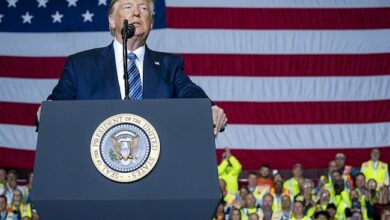
By Peter Tase
Under the leadership of President Ricardo Martinelli, Panama has emerged as Latin America’s top destination to attract foreign direct investments and one of the two countries in the Western Hemisphere that has the highest rate of economic growth. Just like the ranking of United Arab Emirates in being the second largest economy in the Gulf Cooperation Council, the Republic of Panama is highly commended for having the highest GDP per Capita in the region and is ranked the second country in the region for infrastructure quality, improved macroeconomic stability and technological innovation in the World Economic Forum Global Competitiveness Report.
Even though Latin America has mostly wriggled from the current global economic recession, President Martinelli’s administration is highly praised for its resilience in maintaining high democratic standards, promote a free market economy, attract foreign investments as well as transform Panama to become a host of regional headquarters for many renowned international corporations. In 2013, Panama emerged as the second most competitive economy in Latin America and the first in the Western Hemisphere for accessibility of financial services; together with two other countries it reached the score of 70.0 for its financial freedom and has more than 22 points in the world’s average; in the Western Hemisphere, Panama is ranked number one for its port facilities and is one of the World’s top four countries for having a high quality and the latest generation of logistics in port services.
The reforms led by the Martinelli government have made possible a higher rating issued from Standard & Poor and Moody’s, commending Panama’s recent efforts in tax reform, maintenance of a steady GDP Growth and the balancing public debt.
Thanks to its strategic location, Panama’s economy leads the way in the Americas, since the inauguration of Panama Canal, since 1914; the nation has been at the forefront of regional commerce, historically connected South America’s trade routes with the north and has the only deep water port that connects the two oceans. There is no doubt that Panama will have brighter prospects and the upcoming presidential elections in May 2014 will play an important contribution towards the country’s political and economic future. Only in December 26th, President Martinelli announced that his Party of Democratic Change (Cambio Democrático) has signed a political alliance with the Liberal Republican Nationalist Movement (El Movimiento Liberal Republicano Nacionalista) for the general elections of May 2014. The results of these elections will set the course for Panama’s role in International Commerce, regional stability and in Central America’s relentless economic growth.
Emergence of a Robust Growth
Panama has played an important role towards fostering privatization and regional trade liberalization; above all has been very active in America’s movement of free trade agreements. Panama’s economy offers a low inflation advantage thanks to its Dollar based currency. President Martinelli’s government has brought stability, promoted democracy and has constantly pursued initiatives that attract foreign investors in almost every sector, particularly in health and human services, tourism, real estate, retirement services, public infrastructure, logistics and cargo shipment technology. Panama’s wise fiscal management has also helped reduce the burden of public sector debt into 41 percent, this amount will decrease as tax collection services become more accurate and its economy flourishes.
In the 2012-2013 Global Competitiveness Report, Panama’s government is ranked the third most transparent; one of the most economically competitive nations and has become highly attractive for venture capital investment. President Martinelli´s US$ 20 Billion investment plan during his 5-year term in office has launched new infrastructure projects as well as fiscal reforms have expanded foreign business operations across the country. Since 2009, under President Martinelli’s leadership, foreign direct investment has grown up to 38 percent annually, many more Fortune 100 companies have established operation offices in Panama City and the nation enjoys a cutting edge health care technology, modernized transportation infrastructure and a sound education policy. Investments in Panamanian infrastructure include more than US$ 680 Million that are spent in three major projects: the Madden-Colón highway extension; Cinta Costera highway and the construction of the North Corridor Highway.
Panamanian administration has embraced a continued diversification of the economy in order to better absorb a potential economic recession in the future. The Panama Canal is being expanded and by 2014 it will accommodate the largest cargo ships and generate additional revenue of US$ 5 Billion a year.
The canal expansion project on Atlantic and Pacific Coasts, will strengthen Panama’s global logistical benefits in the Western Hemisphere and fuel the transportation of commodities with a much higher efficiency, while the country is expected to preserve its accomplishments in financial infrastructure, considered by the World Bank to be among the top two in Latin America and the 40th at a global level.




